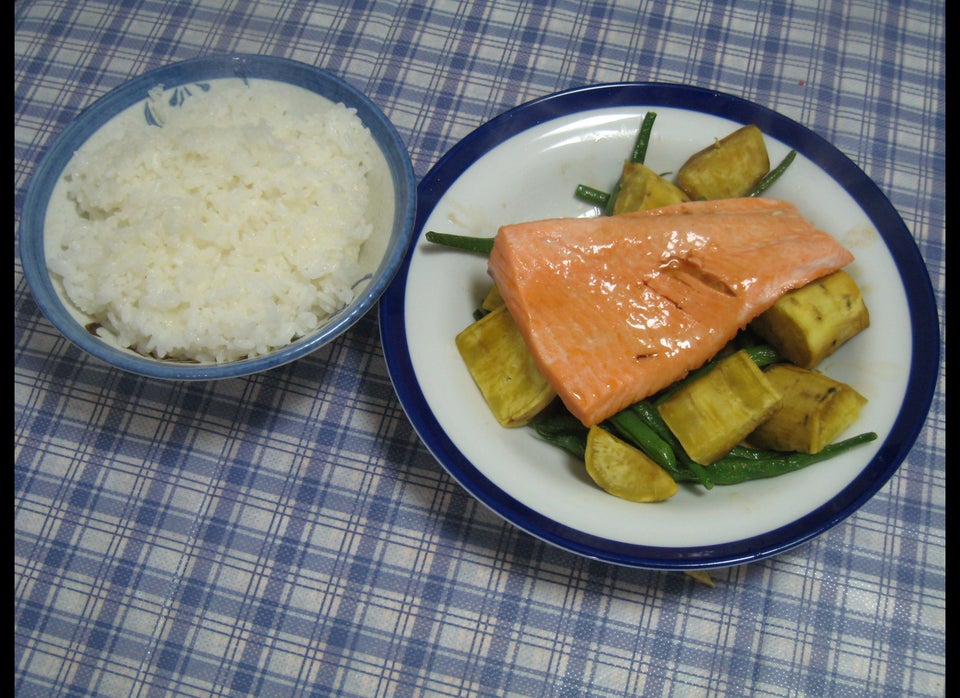
Those words sputtered out of my mouth as I sat in the cardiac ICU of a local hospital in the spring of 2011, recovering from a heart attack. I was 28.
Eight days prior, I marked the happiest day of my life. My husband and I, in our second year of marriage, welcomed our first child into the world. My pregnancy had been a breeze -- save for the rampant nausea in my first trimester. I gained a favorable amount of weight. I maintained a healthy pregnancy diet, though I did eat my fair share of peanut butter cups. I continued to work out at the neighborhood gym well into my third trimester. At that point, the threat of icy sidewalks discouraged me from exercising after work.
For the first 28 years of my life, I didn't think about my heart health. Genes gave me a good metabolism and a tiny build. I grew up playing softball and competing on a gymnastics team. As I got older, I learned a bit of yoga and joined a gym to keep my stomach flat and my rump shapely. In my mid-20s, I found a passion for cooking and enjoyed the challenge of creating delicious meals for loved ones. No one in my family had heart disease. In my mind, people with heart disease were obese, over the hill and sluggish. People with heart disease overeat fast food and watch too much reality TV. They smoke, drink and drug themselves into a stupor. They work themselves to death shoveling snow. And in my mind, they were men.
So, I wasn't thinking much about my heart when the pain started on April 13, 2011. I was washing my hands in the tiny bathroom of our city bungalow while my husband, our newborn and our Westie enjoyed an unusually warm spring day. The pain started so quickly, I heard it crackle in my ears like thunder. For a moment, I thought something had fallen on me; but as I looked in the linen closet, the stacks of towels placed there were all intact. I struggled to catch my breath and clung to the sink waiting for the pain to subside. My chest was on fire, my triceps felt like they were being ripped from my arms and two knives were twisting my back beneath my shoulder blades. I stumbled out to the living room couch and laid there thinking that would help. To my dismay, the pain continued. I walked to the back door and called for my little family to come inside. We had to go to the hospital.
In the emergency room, a cardiologist would discover a tear in my left anterior descending coronary artery (LAD) -- a tear that caused a blood clot to block blood flow to the apex of my heart. Within minutes of this discovery, I was whisked into surgery. My husband signed consent forms and an advance directive on my behalf. By way of my femoral artery, two stents were placed in my LAD to repair the tear and restore blood flow to my struggling heart. I was awake for most of the procedure and watched my heart, illuminated by iodine, beat on a flatscreen monitor. I'd suffered a Spontaneous Coronary Artery Dissection (SCAD) and subsequent major heart attack.
Now I'm a survivor living with heart disease. I am also enjoying the first year of my 30s and planning my son's second birthday party. My perception of heart disease and who suffers from it were far from reality.
Heart disease is the #1 killer of women -- it kills more women than all forms of cancer combined. While breast cancer kills 1 in 31 women, heart disease kills 1 in 3. Think of your mom, sister and best girlfriend -- heart disease could take one of those women from you. Heart disease doesn't look a certain way or discriminate. It doesn't just affect old, overweight, inactive men who decide to shovel snow. It doesn't just happen to "other" people. And if you haven't been affected by heart disease -- trust me, there's a good chance you will in the future.
There are two things I will tell you right now that could save your life:
•Know your risk factors -- schedule a doctor's appointment or visit goredforwomen.org for more information on heart disease.
•Know the signs and symptoms of a heart attack -- and if you think you might be having one, take yourself seriously and get help.
While there's not enough research on SCAD to say why it happened to me or if it will happen again, I've embraced a heart healthy lifestyle as part of my post-heart attack new normal. In the last 22 months, I've seen my son crack his first smile, take his first steps and chatter his first words. I plan to see him off to his first day of school and toss his graduation cap in the air.
I am healthy, young and active. And living with heart disease.
This post is part of a series produced by The Huffington Post and the American Heart Association in recognition of Wear Red Day, the aim of which is to raise awareness that heart disease is the No. 1 killer of women. To read all the stories in the series, click here.
For 13 foods that can help your heart stay healthy, check out the slideshow below:
